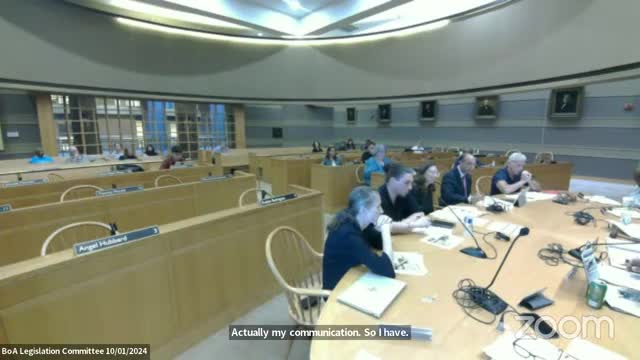City explores innovative solutions for emergency housing crisis
October 01, 2024 | New Haven County, Connecticut
This article was created by AI summarizing key points discussed. AI makes mistakes, so for full details and context, please refer to the video of the full meeting. Please report any errors so we can fix them. Report an error »

In a recent government meeting, officials discussed the potential for implementing emergency shelters and tiny homes in New Haven as part of a broader strategy to address housing needs. The conversation highlighted the challenges and considerations surrounding temporary housing solutions, particularly the use of pallet shelters, which are designed to be non-permanent and exempt from certain zoning regulations.
Pallet shelters, described as metal structures resembling sheds, are intended for emergency situations and do not meet full building code requirements. They are designed to be deployed quickly in response to natural disasters, providing temporary housing for displaced individuals. However, concerns were raised regarding their structural integrity, particularly in relation to local weather conditions, as they do not meet specific snow load and foundation requirements.
Officials acknowledged the need for a more comprehensive approach to housing, noting that while tiny homes and accessory dwelling units (ADUs) are being considered, the current zoning regulations limit the feasibility of clustering multiple small homes on a single lot. The discussion also touched on the importance of exploring various housing models, including mobile homes and prefabricated structures, which could potentially fit within the city's existing framework.
The meeting underscored the ongoing challenges of finding suitable land for these housing solutions, with officials indicating that preliminary discussions have taken place regarding potential sites. However, they emphasized that any concrete strategy would require significant resources and further planning.
As New Haven navigates its housing crisis, the dialogue reflects a growing recognition of the need for innovative and flexible solutions to meet the diverse needs of its residents. The city is looking to learn from successful models in other regions while adapting to its unique circumstances and regulatory environment.
Pallet shelters, described as metal structures resembling sheds, are intended for emergency situations and do not meet full building code requirements. They are designed to be deployed quickly in response to natural disasters, providing temporary housing for displaced individuals. However, concerns were raised regarding their structural integrity, particularly in relation to local weather conditions, as they do not meet specific snow load and foundation requirements.
Officials acknowledged the need for a more comprehensive approach to housing, noting that while tiny homes and accessory dwelling units (ADUs) are being considered, the current zoning regulations limit the feasibility of clustering multiple small homes on a single lot. The discussion also touched on the importance of exploring various housing models, including mobile homes and prefabricated structures, which could potentially fit within the city's existing framework.
The meeting underscored the ongoing challenges of finding suitable land for these housing solutions, with officials indicating that preliminary discussions have taken place regarding potential sites. However, they emphasized that any concrete strategy would require significant resources and further planning.
As New Haven navigates its housing crisis, the dialogue reflects a growing recognition of the need for innovative and flexible solutions to meet the diverse needs of its residents. The city is looking to learn from successful models in other regions while adapting to its unique circumstances and regulatory environment.
View full meeting
This article is based on a recent meeting—watch the full video and explore the complete transcript for deeper insights into the discussion.
View full meeting
